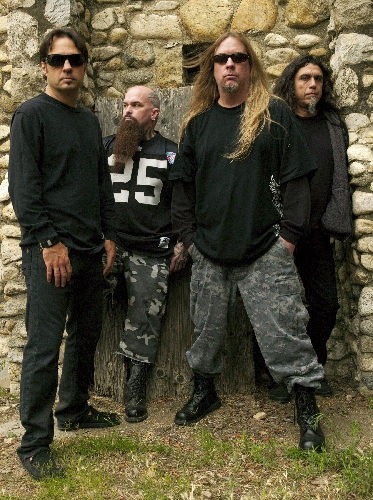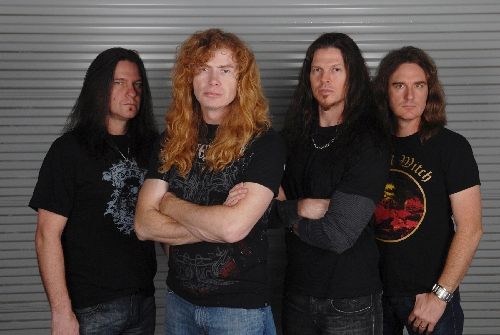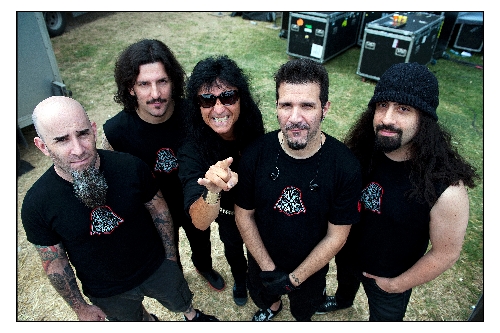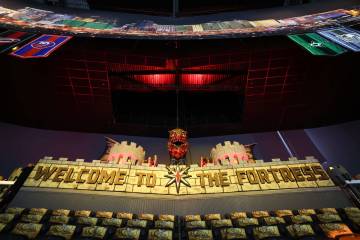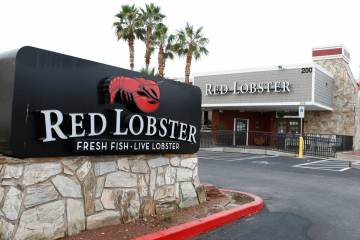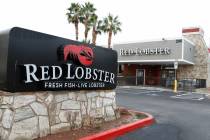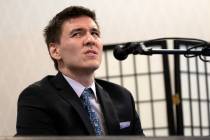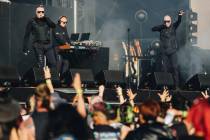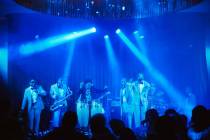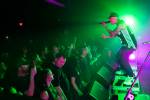Jagermeister Music Tour
It was the storm before the calm.
Musically speaking, 1991 probably will be best known as "the year punk broke," at least according to the Dave Markey documentary of the same name, when Nirvana came from out of nowhere -- i.e., Seattle -- to eventually topple Michael Jackson from atop the album charts.
But earlier that summer, a genre-defining tour dragged a speed-of-sound, denim-and-bruise-smothered style of music -- thrash metal -- up from the underground by its long, dirty hair to reach its commercial peak up to that point.
It was dubbed "Clash of the Titans," and it featured three of the four biggest bands in the movement -- Slayer, Anthrax and Megadeth -- playing packed arenas across the country.
It was a watershed moment for the scene, whose scope finally began to catch up with the outsized proportions of the music's massive sound, all elephantine riffs and a forest-dense bottom end.
"We sold out Madison Square Garden, which was kind of unheard of at the time for the type of music that we were playing," Anthrax guitarist Scott Ian recalls. "It definitely felt like something important."
"Walking away from that tour, I realized that was probably the biggest thrash metal was ever going to be. It was huge," adds Megadeth bassist Dave Ellefson. "That really was a statement for the genre. It was a very big turning point."
Granted, Metallica, thrash's most popular band, had been headlining large halls for a few years by the time "Clash of the Titans" hit the touring circuit like a wrecking ball smashing through some old, dilapidated building. But they had quickly distanced themselves from the rest of the scene commercially, which was also underscored in 1991 when they released their most accessible album up to that point, their self-titled fifth record, which was certainly not a thrash album.
This begs the obvious question: What is thrash, exactly?
The term wasn't even a part of the metal parlance when these bands first started in the early '80s.
"Initially I thought they were calling it 'trash,' and I was very offended," Ellefson chuckles of the term applied to his band's fast-and-furious metal.
"People were calling it speed metal at first," Ian says.
Thrash was born of two, once highly opposed traditions: punk rock and heavy metal, formerly well-entrenched combatants.
Punks hated the pomp and pageantry of metal; headbangers often viewed punks as pretentious and unskilled at their instruments, a bunch of snooty amateurs, basically.
But they shared one thing in common: a need for speed.
As punk evolved into hardcore, metalheads started to take notice of its high-velocity leanings, with the dudes in Anthrax, Slayer and Megadeth being chief among them.
"We were the first generation to fuse punk and metal together," Ellefson recalls. "Punk, at that time, had moved from the British punk of the Sex Pistols and was more like Black Flag, Fear, the Dead Kennedys. We brought along with it Black Sabbath, Judas Priest and Iron Maiden, which was very much metal. When you came to see a Megadeth or an Anthrax or a Slayer show, you'd see guys with mohawks as well as guys with a Motorhead patch on their jacket. We brought the two genres together, and that essentially is thrash metal."
By the beginning of the '90s, the music had reached an artistic high point: Megadeth had released "Rush in Peace," maybe the definitive thrash guitar album with absurdly technical playing; Slayer was touring behind "Seasons in the Abyss," their most accomplished blend of ferocity and dynamics, an album that was equally heavy and catchy; and Anthrax had dropped "Persistence of Time," their densest, most knotty effort at the time.
And so "Clash of the Titans" was something like a victory lap for all the bands in question, albeit a short lived one.
"Then grunge happened and (expletive) up everything," Slayer guitarist Kerry King says. "I think it took thrash 10, 12 years to recover."
Ironically enough, it was the unheralded opening act on the "Clash of the Titans" tour, a then-unknown Alice in Chains, that would be one of the leading bands in taking heavy, guitar-driven music in a different direction.
And they were only on the bill after the group originally intended to fill the slot, Bay Area thrashers Death Angel, had to cancel following a bad van accident en route to a show in Las Vegas that left their drummer critically injured for a time.
But having weathered grunge, nü metal and a dozen other minimovements in metal in the ensuing two decades, thrash is again on the upswing, as a new generation of bands such as Evile, Warbringer, Bonded By Blood and dozens more have brought the sound back to prominence in the metal underground.
" 'Clash of the Titans' was the first big surge (in thrash), and now we're kind of in the midst of the second big surge," King says. "Along with this second big surge of the original bands, you've got some young guys emulating us. If they're making up good stuff, it can only be good, you know?"
Now, once again, Slayer, Megadeth and Anthrax are touring together as part of the Jagermeister Music Tour.
All these dudes have aged -- they either have far less hair or some serious gray flecked in it -- but the sound they pioneered really hasn't.
"Nothing's really changed in our world. That's what's pretty crazy about this," Ian says. "We're out there playing stuff that's 20 years old to an audience where a lot of the kids aren't even as old as the songs we're playing, and these kids have already grown up with our music.
"There's certainly a lot of great bands that have come out from 1990 until now, but they've either done things differently or created their own thing. No one's ever done what we've done," he adds. "You can't do it better, you can only do it differently."
Contact reporter Jason Bracelin at jbracelin@ reviewjournal.com or 702-383-0476.
Preview
Jagermeister Music Tour, with Slayer, Megadeth and Anthrax
7 p.m. Wednesday
The Pearl at the Palms, 4321 W. Flamingo Road
$55-$75 (944-3200)



